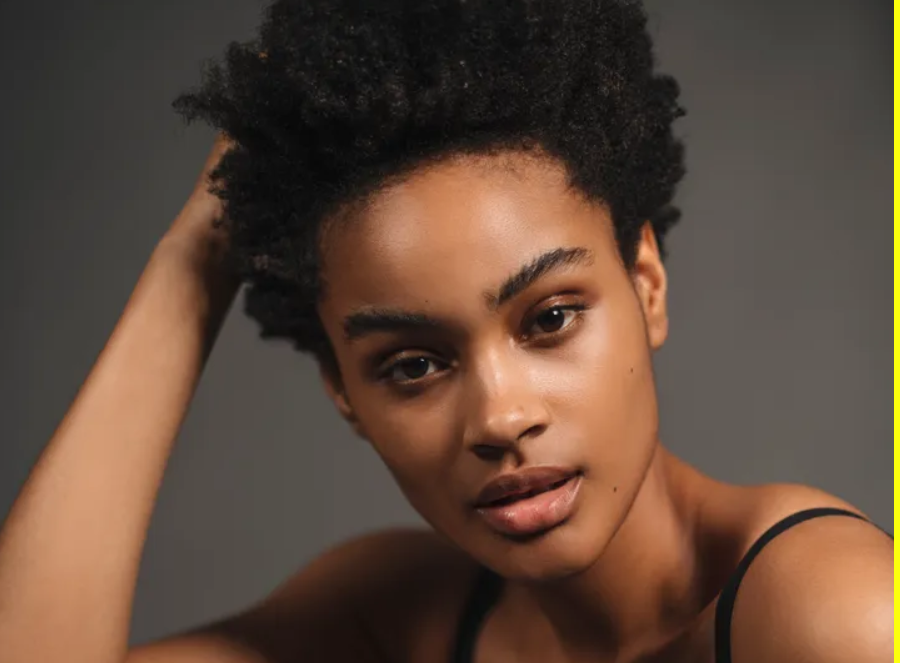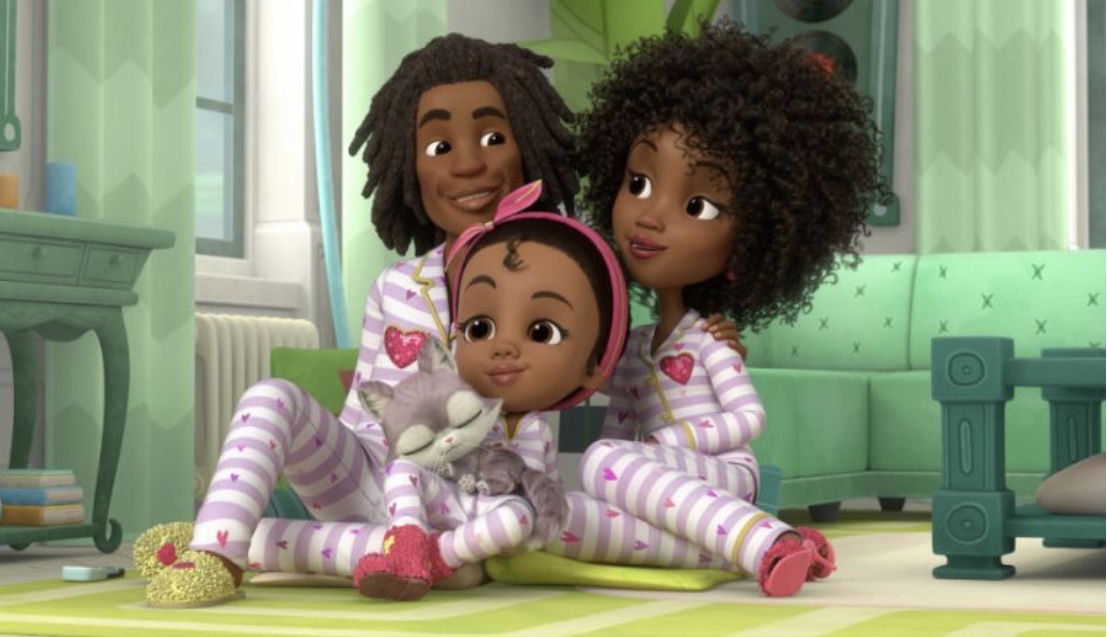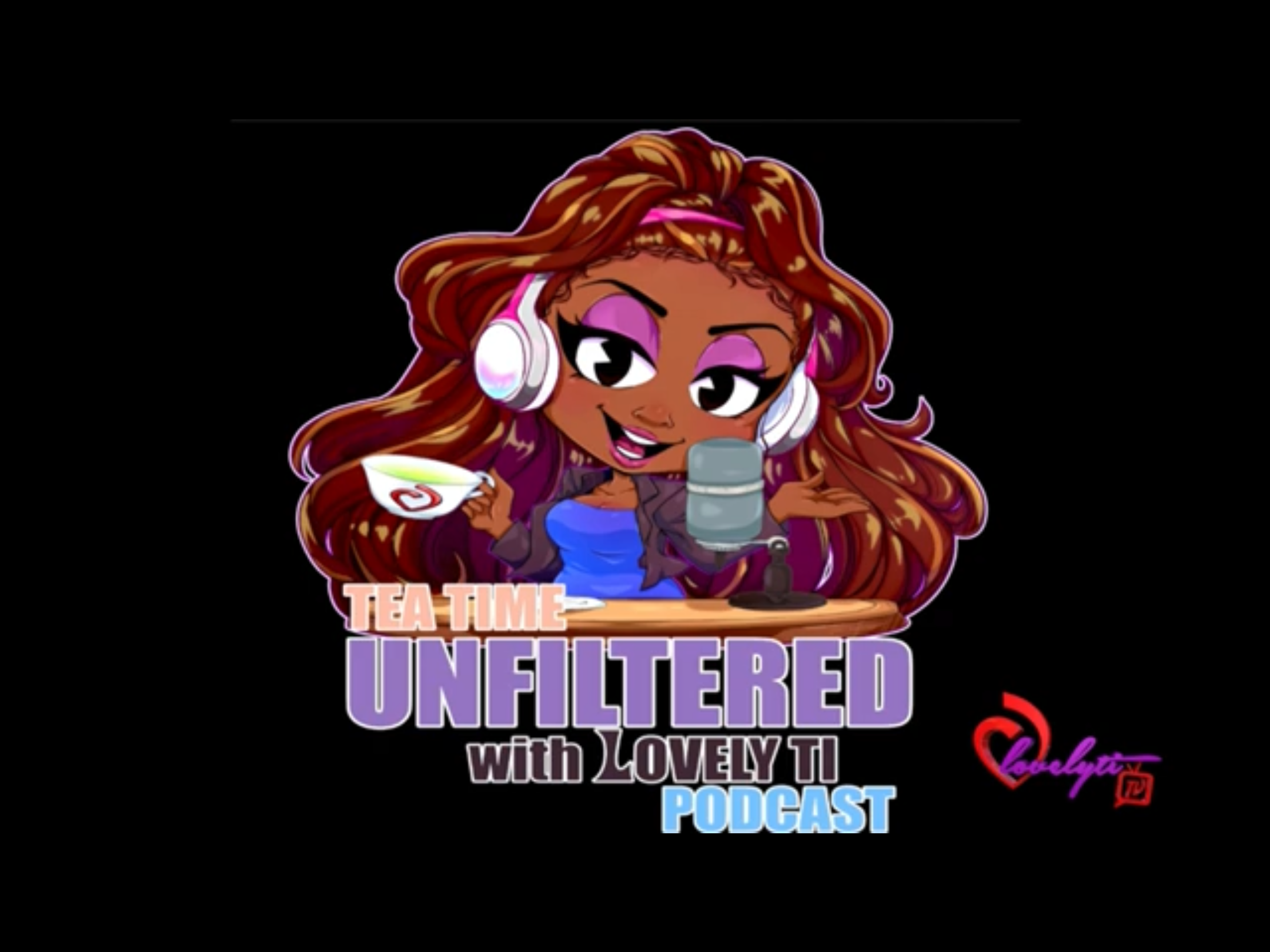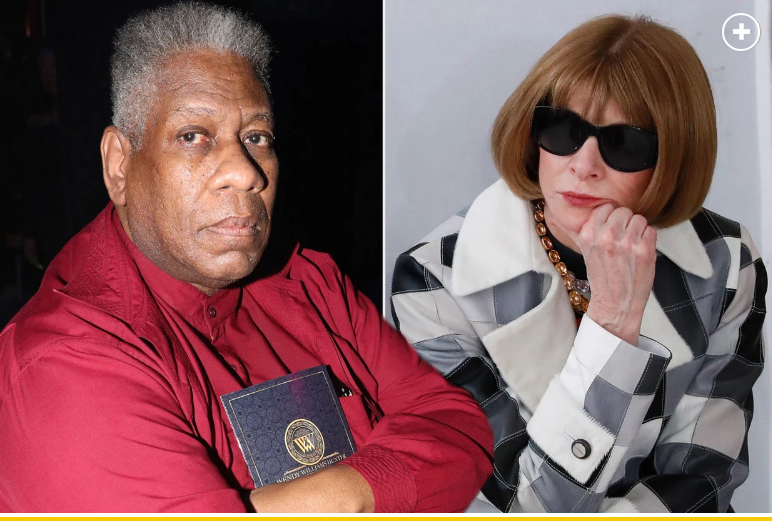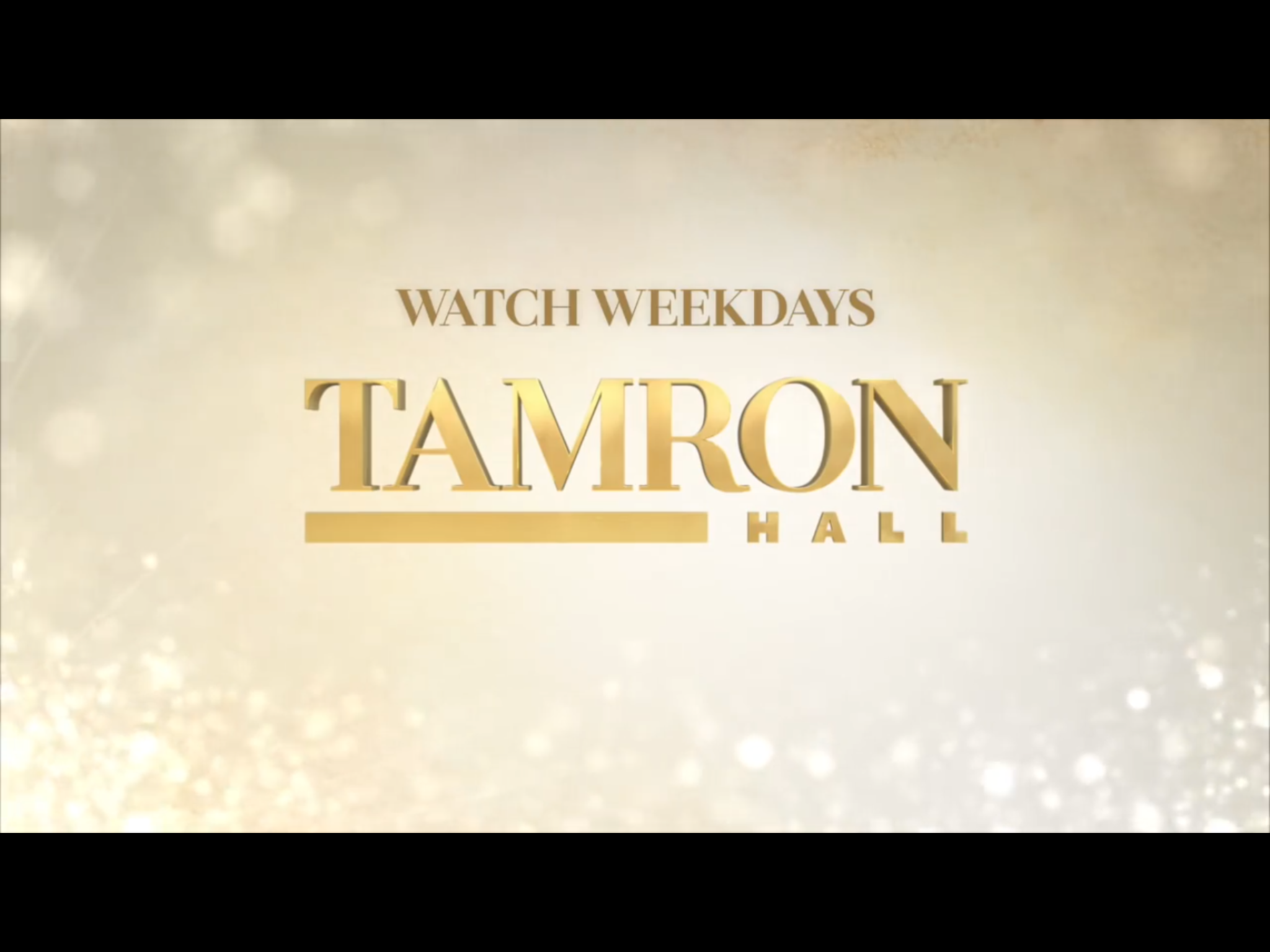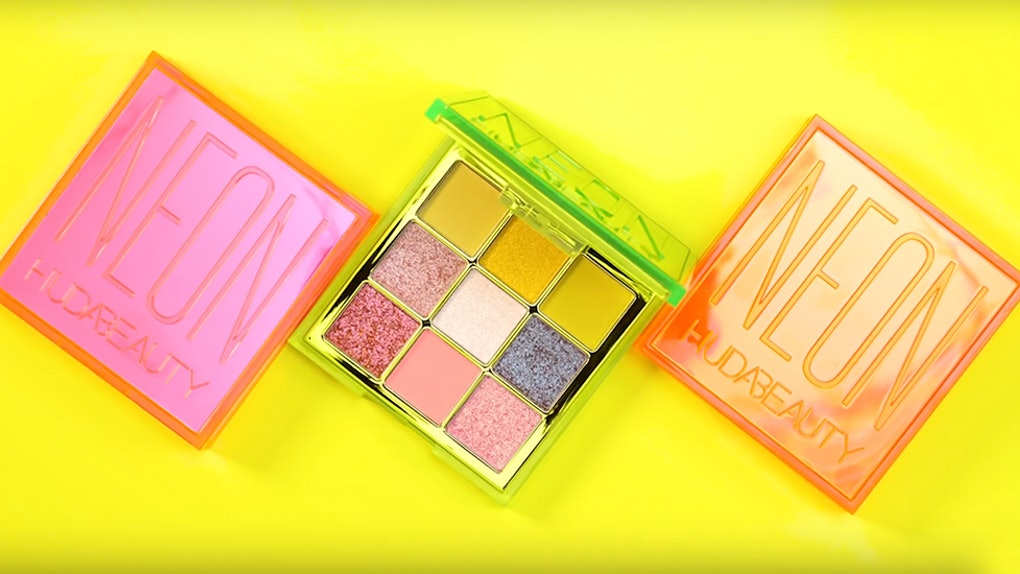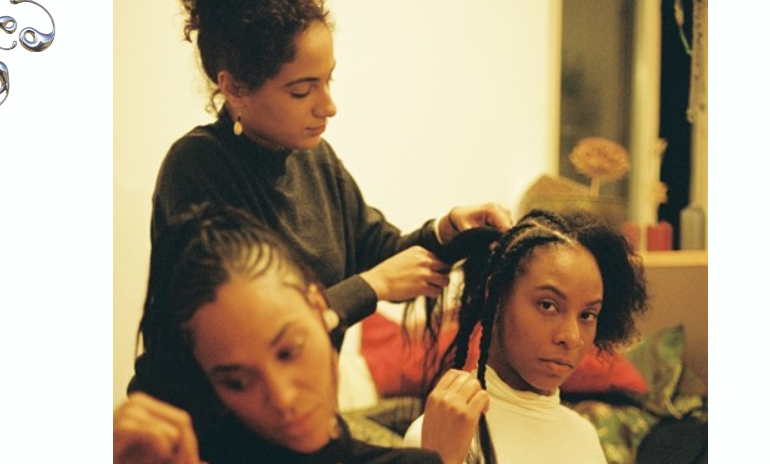UPS ends ban on beards and natural Black hairstyles
The shipping company is lifting several of its longstanding strict rules on the personal appearance of its employees who interact with the public — mostly its army of delivery drivers.
The changes loosen the previous strict limits on facial hair (no beards for most employees, and mustaches limited to above the crease of the lip), how long men could wear their hair (nothing longer than collar length) and hairstyles (no Afros or braids). While styles still must be business-appropriate and not pose a safety concern, those specific limits have been eliminated.Wednesday’s announcement also includes the lifting of gender-specific regulations, including rules like the length of the uniform’s shorts. The new rules, first reported by the Wall Street Journal, were posted on an internal company web site for employees.
“These changes reflect our values and desire to have all UPS employees feel comfortable, genuine and authentic while providing service to our customers and interacting with the general public,” UPS said in a a statement, adding that the company is “determined to continue to make UPS a great place to work for all of our more than 500,000 employees around the world.”
UPS is also surely motivated by its scrambling to add the staff needed to handle the increase crush of packages associated with the surge in online shopping brought on by the Covid-19 pandemic.”Our CEO, Carol Tomé, listened to feedback from employees and heard that changes in this area would make them more likely to recommend UPS as an employer,” said UPS in its statement.Tomé, the first woman to lead UPS, told investors on a recent conference call that the company had increased its employee training, including to combat unconscious bias and promote diversity and inclusion, “to ensure our actions match our values.”
UPS had faced criticism that its appearance rules, particularly the hair guidelines, amounted to a form of discrimination. In 2018 it agreed to pay a $4.9 million fine and enter into a consent decree with the Equal Employment Opportunity Commission to allow greater freedom to wear beards and long hair by those who filed for a religious exemption.
“The EEOC alleged … UPS failed to hire or promote individuals whose religious practices conflict with its appearance policy and failed to provide religious accommodations,” said the EEOC at the time, which also alleged that “UPS segregated employees who maintained beards or long hair in accordance with their religious beliefs into non-supervisory, back-of-the-facility positions without customer contact.”The company then moved to allow religious and medical exemptions for facial hair. But Wednesday’s announcement addresses a broader problem of unconscious bias that the rules reflected, according to Lucinda Duncalfe, founder and CEO of AboveBoard.com, an executive hiring firm that promotes diversity.
“These policies are hold-overs from a different era and reflect the biases that hold back progress, and performance,” said Duncalfe, who praised the change as “great news.” “It never made sense that “natural’ hair was impermissible,” she added.Nearly 300,000 UPS employees are represented by the Teamsters union, and the former rules applied to many of them. The union praised the change.”We are very pleased about it,” said Teamsters’ statement. “The union contested the previous guidelines as too strict numerous times over the years through the grievance/arbitration process and contract negotiations. We have proposed neatly trimmed beards during several previous national negotiations.”It’s been a busy year for UPS. The volume of packages UPS handled increased 13.5% in the third quarter compared to a year earlier, and the company hired 39,000 permanent new employees in the second quarter of 2020, and it intends to hire more than 100,000 additional seasonal employees for the peak holiday season.
Nickelodeon Removes ‘Made by Maddie’ From Schedule Following Backlash Over ‘Hair Love’ Similarities

Made by Maddie is a show we acquired several years ago from Silvergate Media, a renowned production company we have previously worked with on other series,” said a Nickelodeon spokesperson. “Since announcing the show’s premiere date this week, we have been listening closely to the commentary, criticism and concern coming from both viewers and members of the creative community.
In response, and out of respect to all voices in the conversation, we are removing the show from our schedule as we garner further insight into the creative journey of the show. We are grateful to Silvergate Media for all of their work. And we hold Matthew A. Cherry and the wonderful and inspiring ‘Hair Love’ in the highest regard.”
The Nickelodeon series, which was slated to premiere on Sept. 13 on ViacomCBS-owned Nick Jr., garnered criticism online earlier in the week after social media users began pointing out similarities in the characters featured in the Nickelodeon teaser and Cherry’s short.
“Made by Maddie” is geared toward preschoolers, and was created by Paula Rosenthal. The series follows 8-year-old Maddie around New York City “as she uses her imagination and design ingenuity to turn every problem into a positive with the perfect fashion fix.”
In July, Cherry and Sony Pictures Animation got the green light to adapt “Hair Love” into an animated TV series for HBO Max, “Young Love.”
Orginal article Yahoo News https://www.yahoo.com/entertainment/nickelodeon-removes-made-maddie-schedule-190917895.html
UNFILTERED WITH LOVELYTI
Did you know Lovelyti has a podcast every week ? Here’s the latest FULL EPISODE. Well now you know. Subscribe to her on Spotify, SoundCloud and Apple podcasts.
Walmart Says It Will No Longer Lock Up African-American Beauty Products
The policy had been the subject of a racial discrimination lawsuit that was dropped last year, but the practice had come under renewed scrutiny.
Walmart will end its practice of locking up African-American beauty care products in glass cases, the retail giant said on Wednesday after a fresh round of criticism that the policy was a form of racial discrimination.
Hair care and beauty products sold predominantly to black people could be accessed at certain stores only by getting a Walmart employee to unlock the cases, some of which featured additional anti-theft measures.
At some stores, the cases were across the aisle from shelves of generic beauty products that were not locked up and that included shampoo and conditioner.
Critics of the practice, which had been the subject of a federal discrimination lawsuit that was dropped last year, said that it implied that black people were more likely to shoplift. Walmart had previously said that certain products were locked up because they were more likely to be stolen.
The change came as a host of major corporations re-evaluated their business practices and social responsibility after the death of George Floyd and widespread protests over police brutality and discrimination. It also followed a recent report by the television station CBS 4 in Denver that drew attention to the different treatment of Walmart customers.
“As a retailer serving millions of customers every day from diverse backgrounds, Walmart does not tolerate discrimination of any kind,” Lorenzo Lopez, a Walmart spokesman, wrote in an email on Wednesday night.
Mr. Lopez said that Walmart, like other retailers, locked up certain items at a limited number of locations to “deter shoplifters from some products such as electronics, automotive, cosmetics and other personal care products.”
“We’re sensitive to the issue and understand the concerns raised by our customers and members of the community and have made the decision to discontinue placing multicultural hair care and beauty products — a practice in place in about a dozen of our 4,700 stores nationwide — in locked cases,” Mr. Lopez wrote.
In 2018, a California woman sued Walmart in federal court for discrimination over the policy, saying she felt humiliated having to ask a store employee to unlock the beauty products case on three visits to the store, including to buy a comb that cost $0.48.
The woman, Essie Grundy, said she went to a Walmart in Perris, Calif., in Riverside County to buy body lotion by the beauty brand Cantu when she noticed that all of the products “targeted at African-Americans” were locked in a glass case, “from the middle of the aisle to the end.”
Ms. Grundy, who was represented by the lawyer Gloria Allred, dropped the lawsuit in November, court documents show.
Reached on Wednesday night, Ms. Allred would not say if there was a settlement in the case, which was voluntarily dismissed with prejudice — meaning it cannot be brought back before the court. She said that “the matter was resolved.”
Walmart did not comment on the resolution of the lawsuit.
Ms. Grundy declined to comment on the policy change.
CVS and Walgreens have also faced criticism for locking up beauty products sold to black people. The companies did not immediately respond to requests for comment on Wednesday night.
Article via NYTimes
Check out some Lovelyti videos:
Benny Harlem (THE Black HAIR Scammer) EXPOSED!! #RECEIPTS ?
Black Twitter GOES OFF on “Shea Moisture” for white-washing their hair products and tv commercials
Sheryl Underwood goes natural & Apologizes For Calling Natural Hair “Nasty”
André Leon Talley: My relationship with Anna Wintour ‘is in an iceberg’
André Leon Talley just can’t stop talking about Anna Wintour.
Talley, 70, slammed the Vogue doyenne in his new memoir — due out Tuesday — and on Monday told Gayle King during a segment for “CBS This Morning” that “I think my relationship is in an iceberg with her,” adding, “I hope that it will not be that forever.”
As Page Six revealed, those around Wintour, also 70, believe she would be extremely hurt by the book, “The Chiffon Trenches,” which Talley claimed is a “love letter” to her — despite also arguing she is “not capable of simple human kindness.”
During Monday’s broadcast, King asked him to clarify the contradiction.
“I looked at that André and I went, ‘Love letter?’ If that’s your idea of a love letter I’m thinking I don’t want you to like me at all,” King said. “How do you explain that? I thought this must be very painful for her to read. Seriously.”
“Indeed, it is probably very hard for her to read,” Talley replied. “It was painful for me to write this.”
“But it is a love letter because it’s a love letter about the joys as well as the lows of my life. And the joys of my life have been with Anna Wintour,” he explained. “I owe to her the pioneering role that I had of a creative director of Vogue. I was the first black man to ever be named such. I owe that to Anna Wintour. I owe her much. And I think, in turn, I think she owes me.”
When asked to elaborate on what Wintour owes Talley, he replied: “She owes me kindness and simple grace and being decent when things go south.”
“I understand changes are made in a corporate institution at Vogue,” Talley said. “When she decides that I’m no longer working on the carpet for the Met Gala, just call me and say ‘André we’re moving in a new direction, you’ve been wonderful, I love what you’re doing, but now we’re going with the young influencers who know nothing because they have 20 million followers on YouTube.’ Just say it to me. No one had come to say to me why I was taken off the red carpet.”
Tamron Hall show I lost my husband to COVID-19 after getting a haircut
We all are not invincible stay home y’all. I don’t care if your Georgia governor with the quarantine use your head this man died because he wanted a fresh fade. No judgment to the gentleman nor his wife to be but she’s trying to educate those that you think they need that haircut or get your hair re-twisted I’m sorry if you just got loc’d I take that shit out and start all over again when the quarantine is officially over. Remember there’s all kinds of YouTube videos dedicated Jeff how to lock your hair how to give yourself a fade and all that.
The virus can be on instruments like the electric razor the combs they use the towels they use….
Teen slams Huda Beauty over ‘hidden’ warning: ‘Are you kidding me?’
A teenager is going viral after sharing her drastic-looking reaction to a popular makeup brand.
The 17-year-old, who goes by the name Zarina on social media, shared her issue in a video on her TikTok account, which has since been viewed more than 300,000 times.
In the clip, Zarina explains what happened when she attempted to apply a set of eye makeup from Huda Beauty, the brand founded by the makeup artist and blogger Huda Kattan.
“You’re probably wondering, ‘Zarina, why do your eyes look like this?’” the teenager begins her video, immediately revealing large, red splotches on her face.
Zarina goes on to tell her followers that she bought the brand’s Neon Obsessions Palette from Sephora, which she described as an “eye shadow palette.” She then flips over the makeup and peels back a label to reveal that the product is not intended for use on the eyes.
Juste pour prévenir j’étais tombée sur ça à propos des palettes néon ???? pic.twitter.com/ZozckL3Qz9
— maë (@maelysbrn) April 8, 2020
The 17-year-old also says she’s “disowning” Huda Beauty for the “hidden” warning.
“Are you freaking kidding me? It’s an eye shadow palette. And the fact that she tried to hide it. Cancel her,” Zarina concludes, referring to Kattan.
Zarina’s video immediately went viral, drawing hundreds of responses that shared her outrage. Others, however, were less sympathetic, saying the teen should have known better.
“Sis I ain’t trying to attack you but this isn’t anything new,” one commenter wrote. “Most bright pinks and reds stain and most of them have this warning.”
However, many who had used the product in the past seemed to share Zarina’s frustration. There are several negative reviews on Sephora for the palette, with several customers citing the eye warning as the biggest issue.
“I tried to take it off with a make up wipe and washed my face but the product stained my skin and I couldn’t get it off. Poor product,” one reviewer wrote.
“Stains the eye and the actual label that says not for the eye area is hidden under a sticker. why is an eyeshadow palette not for the eyes?” another added.
Watch the video on YahooLife
Tips on caring for afro hair in quarantine, from hairstylist Kemi Akinbola
Use this guide to get your locks on point at home
Article via DazedDigital
Not going out means there’s no need to lay down your edges, secure your wig, apply heat or twist/plait/pack (delete as applicable) your hair every morning. Seriously. If you’ve reached the end of your protective hair cycle, take it out and be free, let your fade grow out until you see your go-to person again. “Now is the perfect time to become good friends with your hair,” says Kemi Akinbola, the hair stylist behind the orange and black waist-length braids IAMDDB sported at Field Day Australia in January. “I had braids in and I was like, ‘I’m in quarantine so these braids are coming out.’ (That way) you can see what your hair is doing everyday, keep it moisturised and spend time detangling. When we come out of this, if you do want to put your hair in a protective style, you’ll know that your hair’s been looked after.”
Formally trained to do all types of hair and styles, Akinbola is a crochet specialist with her own burgeoning music career, and a word-of-mouth client base that includes fellow singer Nao and make-up artist and Dazed Beauty community member Mata Marielle. Operating out of her home, the hairstylist’s approach is organic, steered by Subrina Kidd and experimenting on her own 4B/C texture, and all about empowering people to nurture their own barnets in all their glory. “Use the products you have, try different twist outs, braid outs, cornrows or practise having your hair out. Get used to the way your hair looks and being your authentic self with your hair.” So relax and read on for Akinbola’s tried-and-tested afro hair tips and favourite products.
HAVE ON HAND…
“A good shampoo, ideally sulphate-free and a highly moisturising, deep conditioner. I use Creme of Nature which also has an intense treatment conditioner or the Dizziak shampoo and conditioner. I would make sure I have a good leave-in conditioner too from As I Am or Giovanni to leave in overnight if you want too. Then a nice oil. My hero product which I really really love is Sunny Isle Jamaican Black Castor Oil Pure Butter Lavender. It’s moisturising, smells nice, helps edge regrowth, and you’ll find your hair is extremely soft. Decide how much product to use based on how much hair you have and how it feels – I’m quite heavy-handed. Make sure you get the product onto every strand.”

TAKE YOUR TIME
“What I would do is shampoo and then a deep treatment, put a plastic cap on and leave it on for a while. If you have a hood dryer, sit under that to make sure it penetrates the hair. Detangle your hair, rinse the conditioner out, then put your hair in twists to let it air dry. There’s no rush is there?”
BUILD-UP BE GONE
“It’s best to use a really strong shampoo, maybe a sulphate one, or if it is sulphate-free make sure it foams. If you have a protective style and you find you have a lot of product build-up (when you take it out), don’t be afraid to do more than one shampoo, maybe three or four if you need to. Make sure you really scrub every inch of your scalp. As long as the scalp and hair is fully foamed up and really clean, it should go.”
GET YOUR TWIST OR BRAID OUT POPPING
“Get a wide tooth comb and some leave in conditioner and divide your hair into sections. If you do loads you’ll have a more defined twist out, but if you’re not that fussed, 10-15 is fine. Run leave in conditioner through each section, seal it in with an essential oil of your choice, then detangle with your fingers or a comb. If you don’t mind the shrinkage, do a double strand twist (two chunks of hair to create a rope twist) with each section for a more spiral, afro look. If you want your hair stretched out for length and volume, do it with three for a braid out and a more zigzag look. Make sure the ends are fully moisturised so they coil up.”
“Then leave it to dry. It can be your protective style for a week and if you want to take the sections out, get a nice oil, rub it through each twist /braid and unravel them starting from the end. Seperate them, shake it out and see how it looks. It’s a good time to experiment and there are so many tutorials on YouTube. Type in your hair type and ‘twist out’ to search. Choose a YouTuber who has the same hair type and be realistic about the end result.”
REVIVE YOUR EDGES
“It’s easier to look after your edges if your hair isn’t in a protective style, unless it’s one with your hair like mini twists or cornrows or braids. Castor oil is the main product to apply. Tea Tree oil, rosemary oil, oils that are healing and also give it time. Obviously if your edges are weak, don’t do anything tight around your hairline or slick your hair down. At night, rather than tying a satin scarf around your head like a pirate, which rubs on your edges, put a loose bonnet over your hair instead. A silk or satin pillowcase is fine but if you’re using oils overnight, they’re going to go on the pillow and your face (if you’re not wearing a bonnet). Just keep everything loose until your edges grow back.”

DIY OILS AND TREATMENTS
“Now’s the time to play around with the oils in your cabinet. Extra virgin olive oil is a good moisturiser and people also like to use coconut oil, peppermint oil is anti-inflammatory if you have an itchy scalp. I like castor oil because it’s very good and I have a lot of hair. It really depends on if you’d like your mix to be thick and it’s a case of trial and error. You just don’t want something that will make your hair crispy. People say that honey, eggs and avocado make a good moisturising home-made mask but I’ve never tried it myself. If you run out of shampoo, you can use apple cider vinegar to clean your hair.”
I’m A Black Model And This Is What My Hair Goes Through
Jade Williams shares her challenges of having natural hair in the modeling industry
Article via HuffingtonPost
Having natural hair as a Black woman in the modeling industry can help you stand out, but it also comes with challenges. Many hair stylists for photo shoots and runways aren’t trained to work with different hair textures — a dilemma that Jade Williams, a 24-year-old model with JAG Models, is all too familiar with.
Up until she was 18 years old, Williams had always chemically straightened, or relaxed, her hair. But then she decided enough was enough.
“I don’t feel defined by my hair, but it symbolizes me embracing my full self,” Williams said.
Williams spoke to HuffPost about how she embraced her natural hair, the struggles that arise in an industry that isn’t always welcoming of — or trained in — natural beauty, and why she continues to celebrate her look despite these issues.
You embrace your natural hair now, but was that always the case?
In the Black community (more so back in the day), we got our hair chemically straightened from a very young age. When I was 3 or 4 years old, my mother decided to have my hair chemically straightened because my hair was extremely coarse and thick. I would get my hair relaxed every six weeks. Imagine the money spent and damage that has on your scalp over the years! I had many hairstyles with my relaxed hair: razor bobs, blunt bangs, shaggy cuts. I’d been getting that done up until I was about 18 years old.
What was it like getting your hair chemically straightened for that many years?
I’ve experienced chemical reactions, burns and rashes from relaxers, and this is something that is common and a risk people take to have straighter, more manageable hair. This is something that was normalized in the Black community— not so much today, but when I was younger. All for straight hair. This is a direct tie to what we call assimilation in the Black community, where we try to adapt more European standards of beauty.
When did you decide to break from that beauty standard?
I wanted to since I was a younger teen, but I was afraid it would take too much time to do (it takes more time to do natural hair as opposed to chemically straight hair). And I felt that society — or even kids — tease natural hair, especially hair textures like mine where it’s not really a loose curl, it’s a really tight, kinky curl.
Within the Black community, there are the terms “good hair” and “bad hair.” Good hair is usually depicting a Black woman with curly, silky hair. Bad hair would be more kinky, coarse hair like mine. That was something that I was self-conscious about.
But when I graduated from high school and was finally confident enough to express my true self, I decided to stop relaxing my hair. Some people cut all their hair off and start fresh. I was too scared to do that, so I transitioned.
What was that transition like?
After months of not using relaxer, my hair became difficult to style ― I had half an Afro with straight hair at the end. About a year after transitioning, I was invited to a pool party. The thought of me jumping in the pool with my hair like that was terrifying, so I got scissors and got to cutting. That was one of the most liberating moments of my entire life. I went to the pool party, jumped into the pool, and out came me and my voluminous curly Afro. I felt like me, the beautiful Black queen that I was always destined to be. I’m glad I was able to break that cycle and live in my truth.
And does it take more time to wear your hair natural?
People just have the perception of that. It depends on how you want to do your hair naturally. For example, the way I have my hair now is called finger coils. You section your hair into 100 or more sections, and you twist it around your finger to give it an illusion of dreadlocks. That takes about three hours to do.
So let’s talk about modeling. How did you get your start?
I’ve been into modeling since I was a kid. I was always the girl who was just natural in front of the camera: dancer, model, performer. When I was in college, I was freelance modeling and traveling between Washington, D.C., and New York City. I went to Howard University for graphic design. When I graduated, I wanted to really pursue my passion for modeling. So when JAG reached out, it was the perfect opportunity to do it full-fledged. I signed with them last April.
How do you feel your natural hair is viewed in the modeling industry? Has it held you back?
No, I actually feel the complete opposite. When it came to my natural hair, it was actually the thing that put me on the map. The way that I wore my natural hair was very bold. I just let it grow and do its own thing. I let it shape the way that it naturally shaped. I didn’t really try to keep it up too much doing tedious styles — I just let it be.
I do think that it’s very intriguing to clients. People want to capture me and my full essence. However, when I get on some sets, they don’t have the proper team to tend to my hair type, which is sad and unfortunate. So that’s the thing: You have clients that are obsessed with my hair but don’t really invest in people that have knowledge of it.
Is it difficult having people work on your hair who don’t have the proper skills?
I’ve heard comments like, “It feels like I’m knitting when I’m doing your hair,” or, “Keep it wild.” The term “wild” is very offensive because historically, Black people have been compared to animals. When people say things like that, it’s a trigger point in a lot of ways. I’ve had to show a hair stylist how to tend to my hair, and I’ve had a team wanting my hair to be bone straight. If they do straighten my hair, it’s a possibility my hair will not revert back to being curly. It might cause damage, it might break off — and that will, in turn, hinder my opportunities in the future.
Have you ever had someone try to straighten your hair on set?
Yeah, I did have an experience where half my hair was straightened. It was one of my first gigs. We had a time frame and they just thought that the hairstylist should be able to straighten my hair within 45 minutes, and that’s not the case because my hair is very thick. They had to basically try to do a half-straight, half-curly style that turned out horrible. Even though I shared that I was uncomfortable with my hair being straightened, I felt the need to be quiet.
But now I’ve learned that JAG is very supportive of me speaking up about what I would allow when it comes to my hair.
What changes would you like to see in the modeling industry in regards to hair and diversity?
Black hair is something that every team needs to know. You can’t use every product that you find in hair stores. You shouldn’t use hairsprays because it damages our hair ― even certain heat settings and things like that. And I don’t think it’s taught enough to hair stylists on set.
I would also love to see more teams have knowledge of natural hair. Sometimes you’ll see a girl with an Afro or curly hair, and you’ll have other girls in the same job who don’t have that hair type get all these intricate styles. Since the stylist doesn’t know how to do the Afro hair, it’s just left alone. It feels like, “We have no clue what to do with the hair, so we’re going to leave it how it is.”
Do these obstacles ever make you consider changing your hair?
No. Regardless of these obstacles I and other Black women have with our hair, this journey plays a big role in the people that we are today. I’m told my hair makes me “different,” but I think it just makes me me. This is how I was created and happens to be a symbol of my ancestry. In Black culture, we call our hair “crowns” to remind us of who we were before oppression: royalty. My crown defies gravity, my crown is fierce, and my crown is love.
This interview has been edited and condensed for clarity.
Check out some Lovelyti videos:
Dope Beauty Skin & Hair Care Launch Party~ Twin Cities
Benny Harlem (THE Black HAIR Scammer) EXPOSED!! #RECEIPTS ?
Black Twitter GOES OFF on “Shea Moisture” for white-washing their hair products and tv commercials
Author Emma Dabiri is fighting for Afro hair to be protected by the law
Article via DazedDigital
The ‘Don’t Touch My Hair’ author is taking matters into her own hands with a petition to amend the Equality Act
Earlier this month, London student Ruby Williams made headlines when she was awarded an £8,500 settlement in compensation for being repeatedly sent home from school over the course of two years because of her afro hair. A month before, DeAndre Arnold, a senior in Mont Belvieu, Texas, was suspended and banned from attending his high school graduation because of his dreadlocks.
In September 2019, a school in North London reversed its decision to ban cornrows and knotted braids after receiving widespread backlash. In 2018, high school wrestler, Andrew Johnson had his dreadlocks forcibly cut by a referee in order to not forfeit his match. In 2017, Brittany Noble, a news anchor in Mississippi claims she was fired after being told her natural hair was “unprofessional” by her employer.
And these are just the ones that made the news, a few instances of the widespread, global discrimination against black people for wearing their hair in natural styles. While in the UK, the 2010 Equality Act protects against racial discrimination, hair is never explicitly mentioned creating a grey area that allows these prejudices to continue.
To cover similar gaps in US law, the states of California, New York, and New Jersey have all recently passed legislation to specifically protect natural black hairstyles from being discriminated against. Called The CROWN Act, this legislation updated the definition of race used in law to also include “traits historically associated with race, including, but not limited to, hair texture and protective hairstyles.” This prohibits the enforcement of grooming policies in schools and the workplace that discriminate against hair types including bans on afros, dreadlocks, cornrows, braids and other traditionally black hairstyles.
It is particularly important that students are protected from racist grooming policies at school. According to Just For Kids Law, there has been a rise in the number of children being permanently excluded from school in the last few years and this can have serious consequences on their progress. “These children often end up struggling to access the education they need to progress in their lives, and many end up stuck in Pupil Referral Units,” the group state. “These lack the educational standards of mainstream schools, and children there often fall prey to criminal exploitation and get funnelled into a life of crime.’
To combat this and hoping to implement similar amendments as in the US in the UK is Emma Dabiri. The SOAS teaching fellow and author of Don’t Touch My Hair recently started a petition to amend the UK Equality Act to include hair.
Here, we speak to Dabiri to find out why she’s taking matters into her own hands and what you can do to help.
What was the catalyst for starting the petition?
Emma Dabiri: One story too many about the way in which black and mixed children are being penalised by policies that cry neutrality but are categorically and inherently biased. The excuse is often that the rules are applied evenly to everybody so they’re not discriminatory. But that’s not the case. They are rules created by white people for white people. They are designed according to a standard that suits the characteristics of European textured hair.
The phrase that many of the schools use about ‘tied back’ hair, for instance, is so culturally loaded. My hair doesn’t just tie back. If I was going to tie my hair back in a way deemed neat, I would have to straighten it first, or apply a lot of gel and styling products and scrape it back. It’s the equivalent of telling a European person, ‘Just wear your hair in an afro, just wear your hair in cornrows, just wear it in twist outs.’ Also, all the nonsense about nothing shorter than grade two haircuts and the wilful ignorance about the difference between the appearance of a grade two on Caucasian hair in contrast to Afro hair.
Why is it so important for Afro hair to be legally protected?
Emma Dabiri: The Equality Act of 2010 recognises that people need to be legally protected from racial discrimination, race is a protected characteristic and within that skin colour is explicitly mentioned. However, hair texture remains as much a signifier of African heritage as skin colour, and hair discrimination is a specifically anti-black form of racism which needs to be identified by law.
In addition to shaming children for being of African descent and reinforcing the centuries-old narrative that our hair is something to be ashamed of, excluding children from school can have other serious repercussions.
How can people help beyond the petition? What more can be done?
Emma Dabiri: We’re collecting stories around this type of discrimination, particularly school exclusions. The more awareness we have of the frequency that this is happening, the stronger the case we can build. Also, anyone with a relevant skillset that wants to get involved, be that from a legal background with experience of this kind of campaign to a platform they could use to amplify this, holler!
What are the difficulties around getting legislation passed?
Emma Dabiri: A petition is good for raising awareness but the petition itself is only one cog in a wheel. It takes a lot of work to build a campaign to change legislation. Working with lawyers, the support of MPs, a media campaign, it’s a lot!
What change do you hope it will bring? Do you feel optimistic?
Emma Dabiri: My intention is that the biased policing of black hair will be recognised as the discriminatory practice that it is and made illegal. Do I feel optimistic? It’s really really shocking that is something that needs to be fought for in 2020 so given that reality, it’s kind of hard to feel optimistic, but a lot of people are galvanised, now’s really the time to make the change that is desperately needed.


